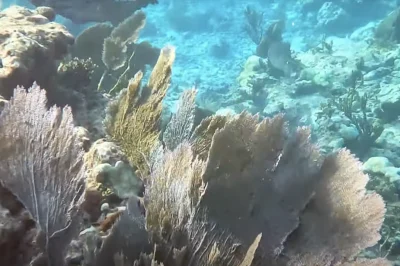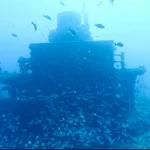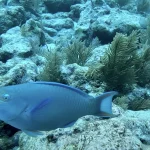Choosing the Perfect Dive Sites in Key Largo

Table of Contents
- Choosing the Perfect Dive Sites in Key Largo
- Understanding the Science of Flying After Diving
- Avoiding Common Mistakes in Dive Planning
- Current Trends in Scuba Diving Safety
- Statistical Insights: Dive Time vs Surface Interval
- Optimizing Your Bottom Time: A Deep Dive Analysis
- Comparing Dive Operators: Key Largo’s Best Choices
- Preparing for Your Post-Dive Flight: Safety Checklist
Introduction
Scuba divers visiting Key Largo can maximise their diving experiences and plan their return flights with safety in mind. This blog post breaks down essential information and best practices that dive enthusiasts need to know to safely fly after diving in Key Largo, ensuring ample bottom time and minimising health risks.
Choosing the Perfect Dive Sites in Key Largo
Understanding Surface Intervals
When planning to fly after diving, understanding the necessary surface intervals is crucial to minimise the risk of decompression sickness (DCS). Following these guidelines is paramount:
- 12-hour surface interval: Recommended after a single no-decompression dive.
- 18-hour interval: Suggested for repetitive dives or multi-dive days.
- 24-hour minimum: Essential if there were any decompression stops during the dive.
Debunking Decompression Sickness Myths
- “12 hours is enough for any dive.” This is misleading; the 12-hour rule applies specifically to single, no-stop dives.
- “Flying below 8,000 feet is safe immediately after diving.” The FAA recommends at least a 24-hour wait to ensure safety.
- “Symptoms will only appear right after diving.” DCS symptoms can develop hours after diving.
Importance of Proper Post-Dive Recovery
The primary reason for these recommended intervals is nitrogen elimination. Flying reduces atmospheric pressure, increasing the chance of gas bubbles forming in the bloodstream or tissues. A 12-hour surface time lowers DCS risk to about 1%, while extending this time to 24 hours reduces it to 0.004%.
Practical Recommendations for Divers
- Plan a “down day” with no diving before travel to ensure maximum safety.
- Refer to the U.S. Navy dive tables for precise surface interval recommendations.
- Avoid flights to altitudes exceeding 8,000 feet during the 24-hour post-dive period.
Understanding the Science of Flying After Diving
General Recommendations
- Single no-decompression dive: Minimum 12-hour preflight interval.
- Multi-day repetitive diving: Minimum 18-hour surface interval.
- Technical or decompression dives: Substantially longer than 18 hours.
Diver-Specific Guidelines
| Dive Type | Recommended Surface Interval | Source Guidelines |
|---|---|---|
| Recreational no-deco | 12–24 hours | DAN, FAA, NAUI |
| Multi-day repetitive | 18 hours | DAN, Abyss Scuba |
| Technical/deco | >24 hours | DAN, UHMS |
Critical Considerations
- Decompression Sickness (DCS):
- Dives requiring mandatory decompression demand extended surface intervals (often >24–72 hours).
- Divers with residual DCS symptoms must wait at least 72 hours before flying.
- Hydration & Oxygen:
- Proper hydration before and after diving reduces bubble formation risk.
- Oxygen breathing pre-flight may mitigate DCS risk.
- Altitude Exposure:
- Even driving over mountain passes can pose risks; avoid altitude exposure post-dive unless essential.
Avoiding Common Mistakes in Dive Planning
Current Trends in Scuba Diving Safety
Recent advancements in technology, combined with a commitment to eco-friendly practices, are driving improvements in diving safety protocols. Divers visiting Key Largo can benefit from these current trends.
Redundant Safety Systems
Adoption of dual dive computers provides backup information on depth, ascent rates, and nitrogen levels, and enables divers to monitor each other’s equipment.
Innovations in Buoyancy Control
The Avelo Scuba System replaces traditional buoyancy compensators with a hydrotank-based design that automatically adjusts to maintain neutral buoyancy.
Wearable Technology and Predictive Safety
- Real-time health tracking: Devices like the Apple Watch Ultra monitor vital signs during dives.
- AI-driven hazard predictions: New systems assess dive conditions and detect anomalies, allowing risks to be identified early.
Emphasis on Training and Supervision
There is a growing emphasis on stringent supervision standards, with dive operators mandating constant visual contact by instructors during introductory dives.
Eco-friendly Practices
Dive operators are embracing eco-friendly practices, including biodegradable materials in dive gear and supporting marine conservation efforts.
Current Trends in Scuba Diving Safety
Flying After Diving Safety Guidelines in Key Largo
Adhering to established surface interval guidelines is critical to avoiding decompression sickness (DCS) after diving.
Recommended Wait Times
- Single no-decompression dive: Wait 12 hours before flying.
- Multi-day repetitive dives: Wait 18–24 hours.
- Decompression dives: Wait 24–48+ hours.
Key Considerations
- Shallow vs. Deep Dives: Even at 20 feet, off-gassing time remains essential.
- Recent Dive History: The surface interval to the flight must account for both dives.
- Practical Example:
- Flight same afternoon: Risky, as nitrogen off-gassing is not complete.
- Flight next afternoon: 30+ hours post-dive offers a safer margin.
Best Practices
- Aim for 18+ hours after a single dive to accommodate individual off-gassing variability.
- Minimize pre-flight factors like dehydration and exertion.
Statistical Insights: Dive Time vs Surface Interval
Recommended Wait Times
- Single shallow dive (no decompression stops): Minimum 12 hours post-dive.
- Repeated/multi-day dives: Minimum 18 hours is advisable.
- Dives requiring decompression stops: Minimum 24 hours is recommended.
Key Scenarios for Your Plan
- Same-day flight: Unsafe due to inadequate time for off-gassing.
- Next-day flight: Safest choice, allowing 24+ hours for off-gassing.
Additional Considerations
- Multi-day diving: Increases cumulative nitrogen absorption.
- Airline cabin pressure: Effective off-gassing on the ground is still critical.
Bottom Time Management
Shallow dives generally permit longer durations. It’s essential to prioritize safe ascent rates and adhere to depth-time limits.
Optimizing Your Bottom Time: A Deep Dive Analysis
Core Recommendations
- Single no-decompression dive: Wait at least 12 hours before flying.
- Multi-day repetitive dives: Allow 18–24 hours between your last dive and flight.
- Decompression dives, heliox, or trimix: Extend the wait time significantly (ideally 24+ hours).
Key Considerations for Key Largo Divers
- Shallow Dives Aren’t Exempt – Even dives at 20 ft require adherence to surface intervals.
- Repetitive Dives – Extend the wait to 18 hours from the final dive.
- Flight Altitude – Pressurized cabins reduce risk but don’t eliminate it.
Example Scenario
If you dive once in Key Largo at 8–9 AM and plan to fly:
- Same-day flight: Risky; minimum 12 hours required.
- Next-day flight: Safest option, allowing 24+ hours for off-gassing.
When to Seek Guidance
Consult Divers Alert Network (DAN) or a medical professional if:
- You performed decompression stops or used advanced breathing gases.
- Symptoms like joint pain or fatigue occur post-dive.
Comparing Dive Operators: Key Largo’s Best Choices
Flying After Diving Safety Checklist
As you plan your return journey after a fulfilling dive in Key Largo, adhere to safety protocols to minimise the risk of decompression sickness (DCS). This checklist outlines steps for preparing for your flight after diving.
Pre-Flight Preparation
- Surface Interval Timing
- Single no-decompression dive: Wait 12 hours before flying.
- Repetitive or multi-day dives: Wait 18 hours.
- Technical dives: Wait 24+ hours.
- Altitude Considerations
- For flights below 8,000 feet MSL: Follow standard intervals (12–18 hours).
- For flights above 8,000 feet MSL: Extend your surface interval to 24 hours.
Best Practices
- Plan a “down day”: Aim for 24 hours of rest after diving.
- Pre-flight oxygen therapy: Breathing pure oxygen before flying may assist in reducing residual nitrogen.
- Hydration and moderation: Avoid alcohol, maintain hydration, and refrain from vigorous exercise.
Preparing for Your Post-Dive Flight: Safety Checklist
Decompression Safety Recommendations
- Single-day shallow dives: Wait 12+ hours before flying.
- Multi-day/repeated dives: Wait 18+ hours.
- Dives requiring decompression: Wait 24+ hours.
Key Considerations for Your Itinerary
- Dive Depth and Profile:
A 20-foot dive is shallow, but cumulative effect of diving can increase residual nitrogen in tissues.
- Off-gassing Time:
- 6-hour wait (same-day flight): Risky due to inadequate off-gassing.
- 18–30-hour wait: A safer choice.
- Practical Planning:
For diving at 8–9 AM, flying the next afternoon minimises risk.
Key Largo-Specific Context
Morning dives are common in Key Largo’s schedule, allowing for ample off-gassing time. However, consider cumulative nitrogen exposure from previous dives, even shallow ones, as they may necessitate extended wait times before flying.
For optimal safety, prioritise 18–24 hours between your final dive and flight.
Sources
- Divers Alert Network – Guidelines for Flying After Diving
- NCBI – Diving Medicine
- FAA – Airman’s Information Manual
- DipNDive – Flying and Scuba Diving Safety Guidelines
- Abyss Scuba – The Dos and Don’ts of Flying After Diving
- Abyss Scuba Diving – Exploring the New Scuba Technology
- Business of Diving – Scuba Industry Trends Analysis
- Diver Right In Scuba – Scuba Diving in 2025





